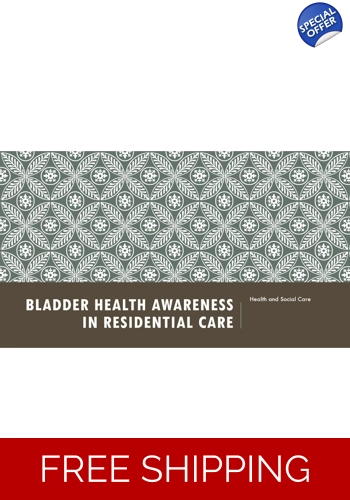Bladder Health Awareness - Residential Care
Bladder Health Awareness - A Guide for Residential Care Staff Health and Social Care Training Resources
All fully editable.
Presentation in sections you can choose which sections to use. Aims and Objectives included if you want to use the presentation as it has been written. Comes with 6 Handouts and 4 multiple choice end of session assessments.
Overall Aim:
- To give an overview of the importance of bladder health in residential care and the connection between overall well-being and bladder health
Objectives:
- Understand bladder anatomy
- Learn how the bladder functions
- Recognise common bladder-related issues
- Emphasise the importance of proper hydration
Presentation
Aims and Objectives
Introduction
SECTION - The Importance of Bladder Health Management
Connection between overall well-being and bladder health (holistic wellness, psychological impact, physical comfort, social and lifestyle factors)
Importance of Awareness among health and social care staff (early intervention, enhanced quality of care, reduced healthcare costs, empowered residents)
SECTION - Bladder Anatomy
Overview of the urinary system
Bladder (function, location, key features)
Urethra (function, male, female)
Sphincters (internal, external)
Kidneys (function, key processes)
Ureters (function, key features)
Understanding and importance
SECTION - How the Bladder Works
Micturition process
Filling of the bladder and sensory signals
Initiation of micturition process
Emptying of the bladder
Role of nerves, muscles and brain in controlling bladder function
Nerves and muscles
Brain
Normal bladder capacity and voiding frequency
Key points about bladder capacity and voiding frequency
SECTION - Importance of Proper Hydration
Importance of Proper hydration
Prevention of UTIs/Maintenance of bladder function
Prevention of bladder irritation and kidney stones
Maintaining elasticity of bladder tissues/Promotion of regular voiding
Support for incontinence management/general health and wellness
Recommended daily water intake
Effects on overall health (fatigue and weakness, electrolyte imbalance, constipation, cardiovascular strain)
SECTION - Recognising Common Bladder Related issues
Urinary incontinence (types, signs and symptoms
UTIs (what they are, signs and symptoms)
Overactive bladder (OAB) (what it is, signs and symptoms)
Interstitial Cystitis (IC)/Bladder Pain Syndrome (BPS) (what it is, signs and symptoms)
Bladder Stones/Benign Prostatic Hyperplasia (BPH) (what it is, signs and symptoms)
Neurogenic Bladder/Cystitis ((what it is, signs and symptoms)
Signs and symptoms to watch for in residents
Importance of timely identification and intervention
Preventing complications/Enhancing quality of life
Reducing the Risk of Falls/Addressing Psychological Impact
Improving Resident Comfort/Preventing Spread of Infections
Preserving Dignity and Independence/Effective Care Planning
Minimising Healthcare Costs/Educating and Empowering Residents
SECTION - Best Practices for Bladder Health
Practical tips (6 slides)
References and further reading
Word Documents
Handouts x 6, Multiple Choice End of Session Assessment x 4
HSC Training Link
Training Resources for Health and Social Care
Supplying training resources for the health and social care
sector since 2004.
Resources purchased are emailed to you via
Zip Folder attachment.
All packs are written in a generic style and can easily
be adapted to suit your own specific training delivery.
Resources are Word and PowerPoint based.
Secure payments via PayPal Merchant Commerce Platform.
You do not need a PayPal account to use this payment
gateway.
Debit and credit card payments accepted.



